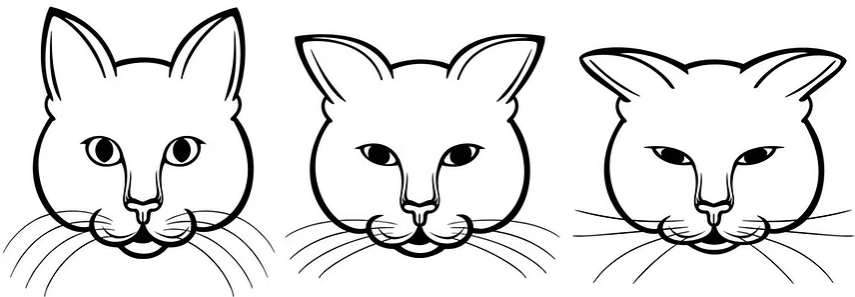Cat Facts: Is your cat in pain? Use the Feline Grimace Scale!
Cats are really excellent at hiding pain and illness. This is a problem when we try to be the best cat caregivers we can be, because it means we can miss signs that they’re in need of veterinary attention. Luckily, anyone can learn to read the signs of pain.
There are two kinds of pain we need to be worried about: acute and chronic. Acute pain begins suddenly and is short-term, generally less than three months. Acute pain can be caused by injury, trauma, surgery, and illness/disease. Chronic pain is pain that persists after an illness or injury would be expected to heal, or pain not associated with healing processes.
There are different ways to assess pain levels depending on the type of pain. For acute pain, scientists have developed the Feline Grimace Scale, which assesses five different facial features (called action units) on a scale of 0 to 2, with 0 being absent and 2 being markedly present. The five action units? Ear position, orbital tightening, muzzle tension, whisker change, and head position.

Ear position is simple: as the ears become more rotated outward, the score increases. Orbital tightening can be thought of as squinting, and the more squinted the higher the score. Muzzle tension, to me, seems like the hardest to spot. In a pain-free cat, the whisker pads (which my friend Yara Haridy lovingly calls “faceballs”) are round, and with increasing pain the whisker pads become more taut and elliptical in shape. When you think about it, the mouth is becoming more stretched, just as when a person grimaces! Whisker changes are easy to spot, but not quite linear in progress. A pain-free cat will have relaxed whiskers that are curved. A cat with a score of 1 will have whiskers pulled closer together that might be curved or straight. When the score moves to 2, the whiskers become straight and start to extend forward. Head position is easy - it moves downward as pain increases.
If you want to learn more and test your skills, you can do so at the Feline Grimace Scale website!